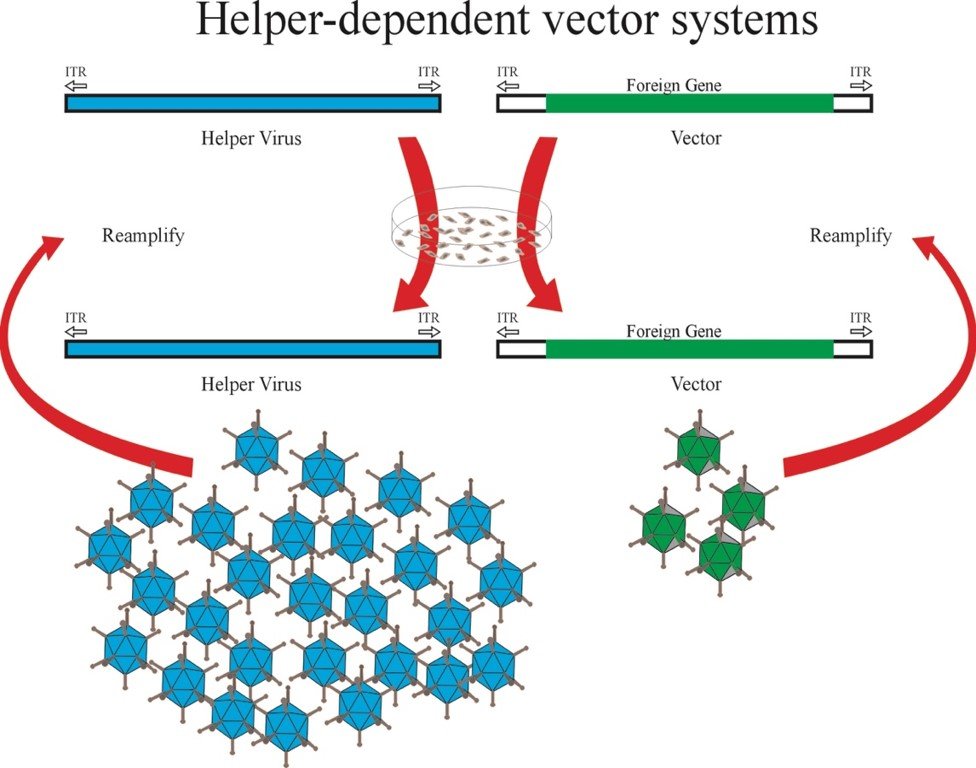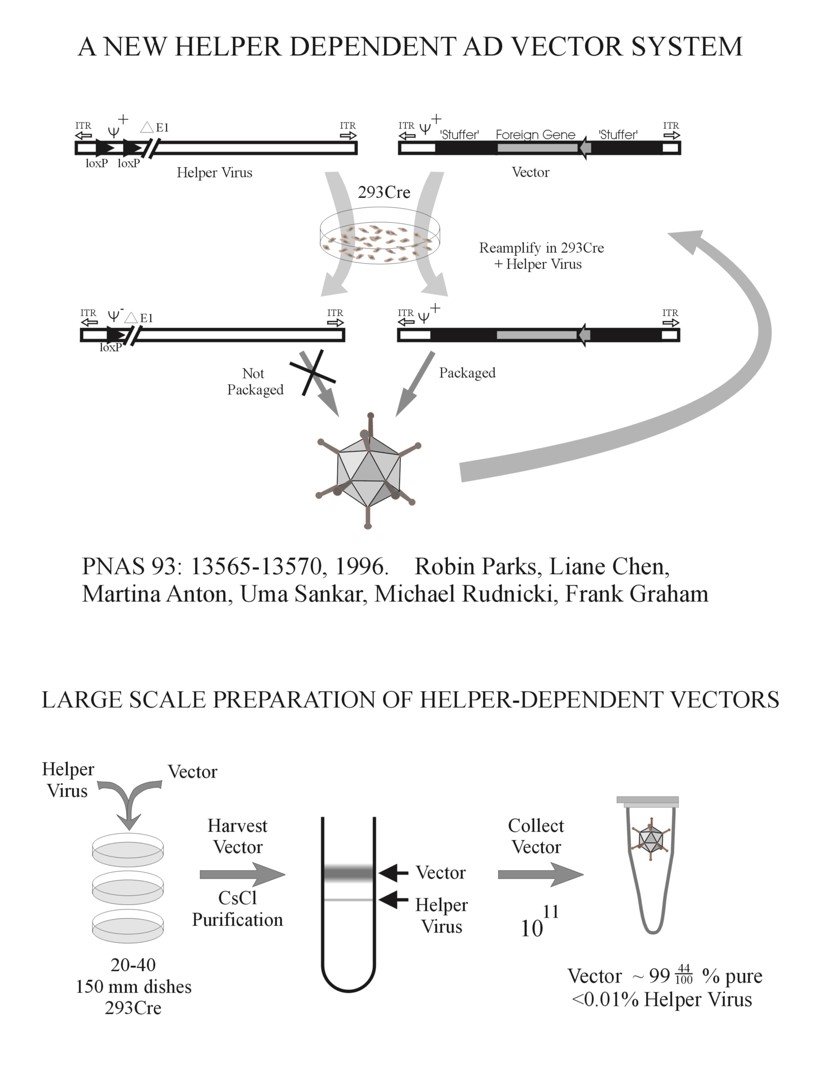Adenovirus vectors from which all viral genes are deleted have a number of advantages over FG Ad vectors with deletions of only Early Region 1 and Early Region 3. Such vectors have a very high cloning capacity, up to 35,000 bp permitting the insertion of large foreign genes or multiple genes in a single vector backbone. In addition, elimination of all viral genes results in a vector that has the potential to lead to long term expression of transgenes in vivo which FG vectors fail to provide (possibly due to leaky viral gene expression and consequent immune clearance of transfected cells), which is an important advantage for many gene therapy applications. To propagate such vectors it is obviously necessary to provide in trans all the viral functions required for viral replication. It has proven impossible to develop cell lines that express a full complement of adenovirus genes, in all probablility because the necessarily high level expression of adenovirus proteins would be toxic for the host cells. Consequently the only way to propagate an Ad vector from which all viral genes have been deleted is to coinfect cells with the vector plus a helper virus that provides the necessary set of adenovirus products for viral DNA replication and packaging into virions. See illustration at right.
The problem with the above system was the need to avoid outgrowth of the helper virus and the need to remove the helper virus from vector preparations. This problem was solved in 1996 (1) through the use of Cre recombinase expressed in 293 cells (293Cre) (2) and construction of a helper virus whose packaging signal at the extreme left end of the viral genome is flanked by loxP sites. Excision of the packaging signal by action of Cre recombinase on the loxP sites results in an Ad genome that can replicate and produce all the necessary adenovirus proteins for virion assembly but which itself cannot be packaged. The system is illustrated to the left.
Helper-Dependent Adenovirus Vectors
1. Parks, R. J., Chen, L., Anton, M., Sankar, U., Rudnicki, M. A. and Graham, F. L. A new helper-dependent adenovirus vector system: removal of helper virus by Cre-mediated excision of the viral packaging signal Proc. Natl. Acad. Sci. U.S. 93: 13565-13570, 1996
2. Chen, L., Anton, M. and Graham, F. L. Production and characterization of human 293 cell lines expressing the site-specific recombinase Cre Somat. Cell and Molec. Genet. 22: 477-488, 1996
References

